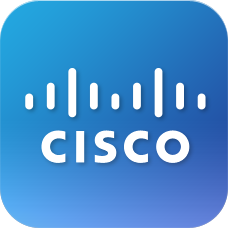The Call Center solution is made up of various products and components that work together to provide the full solution.
Typical Call Center Call Flow Model
Following are the steps generally used when there are inbound calls to a call center:
- A caller calls a main “pilot number” that reaches an Auto Attendant/interactive voice response (IVR).
- The Auto Attendant provides a series of routing options to the caller, based on the time schedule/holiday schedule. Multiple tiers of Auto Attendant options can be provided to reach the correct group of agents. For example, the options start with “Press 1 for English, and 2 for Spanish”, followed by another Auto Attendant that offers “Service” or “Support”, followed by another Auto Attendant that offers support for specific products.
- The caller selects an option and is immediately routed to a call center that handles the call according to the assigned policies (for example, Night Service, Holiday Service, Forced Forwarding).
- The call center offers the call to an agent when the agent becomes available. A whisper message can be configured to be played to the agent prior to receiving the call to provide information regarding the call center from where the call is being sent. This helps the agent better serve the customer.
- A call received during normal business hours or received by a call center with no active special policies is queued in the call center to be processed by an available agent staffing the call center.
- While remaining queued, the caller hears various audio or video announcements, if enabled.
Auto-Attendant
The Auto Attendant service on AVAD Technologies provides an IVR function for the Call Center solution. It provides the prompts and options that route calls from the initial number to various call center queues, agents, supervisors, voice messaging boxes, or other contact points in the organization.
The Auto Attendant provides the following capabilities for use in the Call Center solution:
- Interactive voice response
- Forwarding of a call to the appropriate call center
- Time and holiday-based alternate routing options
Call Center
The Call Center service is the primary component of the solution. It provides announcements, call distribution, and queuing capabilities as well as various policies for call handling and routing.
Call Distribution Features
A call received by a call center can be distributed to the various agents staffing the queue using different algorithms.
Following are the different types of call distribution:
- Regular call distribution: Incoming calls hunt through agents in the order they appear on the list, starting from the top each time.
- Circular call distribution: Incoming calls hunt through agents in the order they appear on the list, starting with the agent who follows the agent who received the previous call. When the search reaches the end of the list, it loops back to the top and continues until it has tried all users.
- Uniform call distribution: Incoming calls hunt through all agents, starting with the agent who has been idle the longest and ending with the agent who most recently answered a call.
- Simultaneous call distribution: Incoming calls alert all agents at the same time. The first agent to answer handles the call.
- Weighted call distribution: Incoming calls are assigned to idle agents based on percentages assigned to the agents in the call center’s profile. This feature supports an element of skills-based routing, since a higher percentage of calls can be routed to more highly skilled agents within the call center.
In addition, a Premium call center can be defined as “skill-based”. In a skill-based call center, each agent is given a skill rating for that call center, where a rating of 1 is the most skilled and a rating of 20 is the least skilled.
A call received by a skill-based call center is delivered to the available agent with the highest skill rating for that call center. In the event of a tie (multiple agents with the highest available skill level), the Regular, Circular, or Uniform distribution policy described above is used to break the tie.





